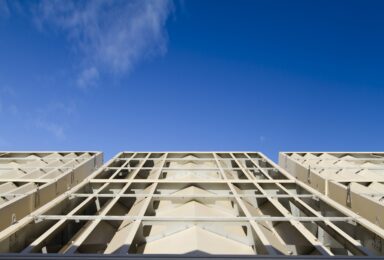
Harnessing the Power of Nature in the Workplace
Natural ventilation is best described as the process of using natural methods to supply and remove air through an interior space. It uses the pressure difference between the building and its surroundings to provide ventilation without the use of a powered ventilation system. Natural ventilation has been used for centuries, millennia even, though the methods used to supply natural ventilation have advanced significantly through continued developments.
The Importance of Natural Ventilation in the 21st Century
In the current era, energy usage has reached staggering amounts and shows absolutely no signs of abating. In most developed countries like Australia, it is undeniable that natural ventilation will gradually gain its prominence in the face of increasing demand for alternative ventilation methods. As a matter of fact, a significant proportion of most businesses’ energy usage is spent on air-conditioning in summer and heating in winter to keep workplaces comfortable. The usage of non-renewable energy will not only have a detrimental effect on the environment, but it will also be extremely costly to maintain the workplace in the long run.
The financial cost and the environmental impact from energy usage needs to be addressed immediately. By increasing renewable energy usage, for example, drawing more of our energy requirements from solar, implementing innovative design principles that empower us to harness the power of nature, we ultimately reap the benefits from incorporating sustainability into our businesses.
Using Renewable Resources
Passive design principles such as the natural airflow principles, enable the utilisation of renewable resources in a natural manner by harnessing the power of nature without the use of electrical ventilation systems. When natural airflow principles are combined with extensive research and development, highly-effective wall and roof ventilation solutions become more relevant to a wider range of businesses.
Rotary roof ventilators, or ‘whirlybirds’, are a highly-effective, environmentally-friendly solution popular for many years. However, businesses are yet to discover the long-term benefits that this will bring, hence the reason why many corporations are still not seeking a green alternative to generate sustainable ventilation for their workplace.
Natural ventilation methods designed with natural airflow principles, including whirlybirds, high capacity roof vents, louvres (fixed and operable) and ventilators (slope and ridge) offer many benefits for business organisations, including:
- Reduced energy usage (both cooling and heating)
- Increased fresh air and natural light indoors
- Minimised building construction costs
When carefully designed and implemented, natural ventilation solutions are extremely cost effective and empower architects to create aesthetically appealing properties free of space-consuming ventilation units that inhibit ceiling height and unsightly pipes and ducts to transfer air to and from air-conditioning units. On the other hand, installing electrical ventilation systems with the wiring, ducts and units required is a costly project.
In an era of excessive unsustainable energy consumption, commercial organisations that implement innovative natural ventilation solutions position themselves as industry leaders by way of reducing construction and operational costs, providing employees with healthy and sustainable workplaces and reduced carbon footprint. Government should also exercise its authority to provide incentives to businesses that use natural ventilation instead of air-conditioning where possible as a responsibility of all, in the mitigation of climate change.